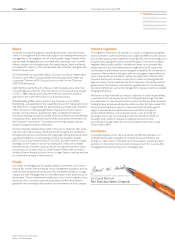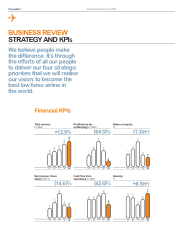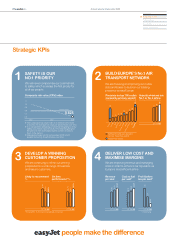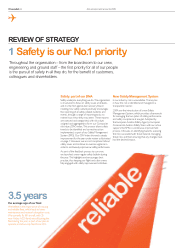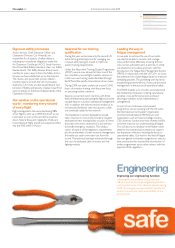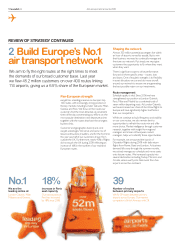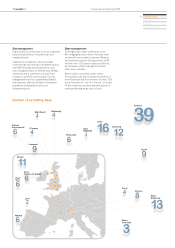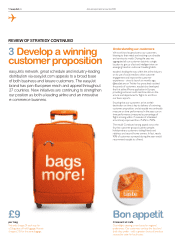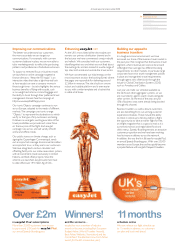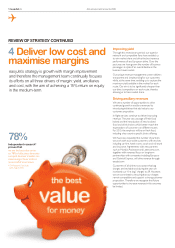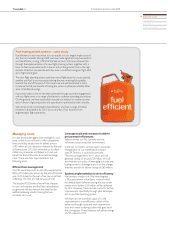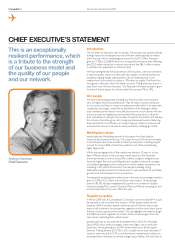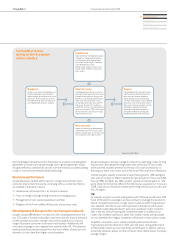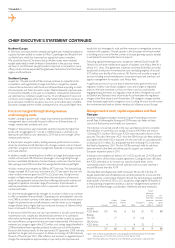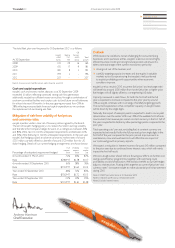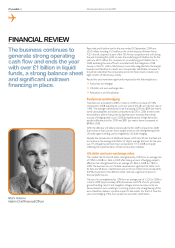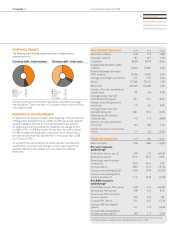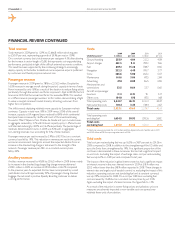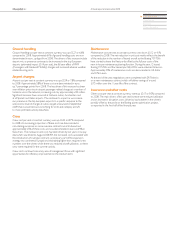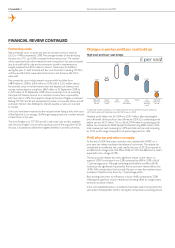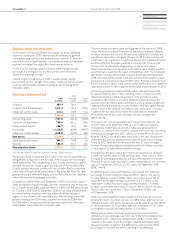EasyJet 2009 Annual Report Download - page 17
Download and view the complete annual report
Please find page 17 of the 2009 EasyJet annual report below. You can navigate through the pages in the report by either clicking on the pages listed below, or by using the keyword search tool below to find specific information within the annual report.
Annual report and accounts 200915 easyJet plc
q
Overview
Business review
Governance
Accounts
Other information
Managing costs
It is vital that easyJet aggressively manages its cost
base so that it can continue to offer competitive
fares protably. easyJet aims to deliver at least
£190 million of cost reduction initiatives by the end
of nancial year 2012; this will enable us to offset
inationary pressures and deliver a £1 per seat
benet to the bottom line at current exchange
rates. There are clear opportunities in the
following areas:
Efficient fleet management
Aircraft ownership costs on aircraft is expected to
fall by £30 million per annum by the end of nancial
year 2012, driven by the exit of our non-core eet
of Boeing 737-700s and GB Airways aircraft.
The easyJet A320 family of aircraft are cheaper
to own and operate and the eet rationalisation
programme will also remove the need for the
additional Boeing-specic training that we
currently carry out.
Leverage scale and recession to deliver
procurement efficiencies
Safety is always our No.1 priority and we
will never compromise that commitment.
In the last 12 months we have seen a successful
renegotiation of our maintenance contract
with SR Technics, a world-class provider.
The new arrangement is for 11 years and will
generate savings of around £35 million. We will
also maintain our policy of leveraging our scale and
buying power to challenge airports on the charges
they levy and aim to deliver savings of £60 million.
Systems implementation to drive efficiency
Fuel remains a major cost. We have targeted
a 3% improvement in fuel burn, some of which
has already been delivered during the year under
review and a further £20 million will be delivered
by 2012. However, there remains room for further
improvement, specically through pilot technique
and a new fuel reporting system.
We have also set ourselves a goal of a 10%
improvement in crew efciency, which will be
delivered through route and crew optimisation
tools and a new rostering system that goes live in
the coming year. These initiatives will deliver savings
of £35 million by 2012.
Fuel management system – case study
Fuel efciency is very important to us at easyJet. It is our largest single cost and
also the most volatile. During 2009, we have made signicant improvements to
our fuel efciency, saving 1.2% of all the fuel we burn. We have achieved this
through the implementation of a new ight planning system, together with a
focus on fuel conservation both in the air and on the ground. Due to the high
number of sectors we operate each day, even a small fuel saving per ight adds
up to big nancial gains.
The new ight planning system optimises every ight based on route, payload,
weather and fuel. It was introduced during the year, reaching full capability
towards the end of the period. This means we are well positioned in 2010
to receive the full year benet of having the system in place plus identify other
areas of additional savings.
Fuel conservation in the air has been achieved through successful engagement
with our ight crews on a range of initiatives to optimise operating procedures.
On the ground, we have successfully reduced our reliance on auxiliary power
units in favour of ground power and operated an optimised aircraft schedule.
We remain rmly committed to fuel efciency and have a range of further
initiatives in the pipeline for 2010, across all areas of our business from
engineering to ight operations.


